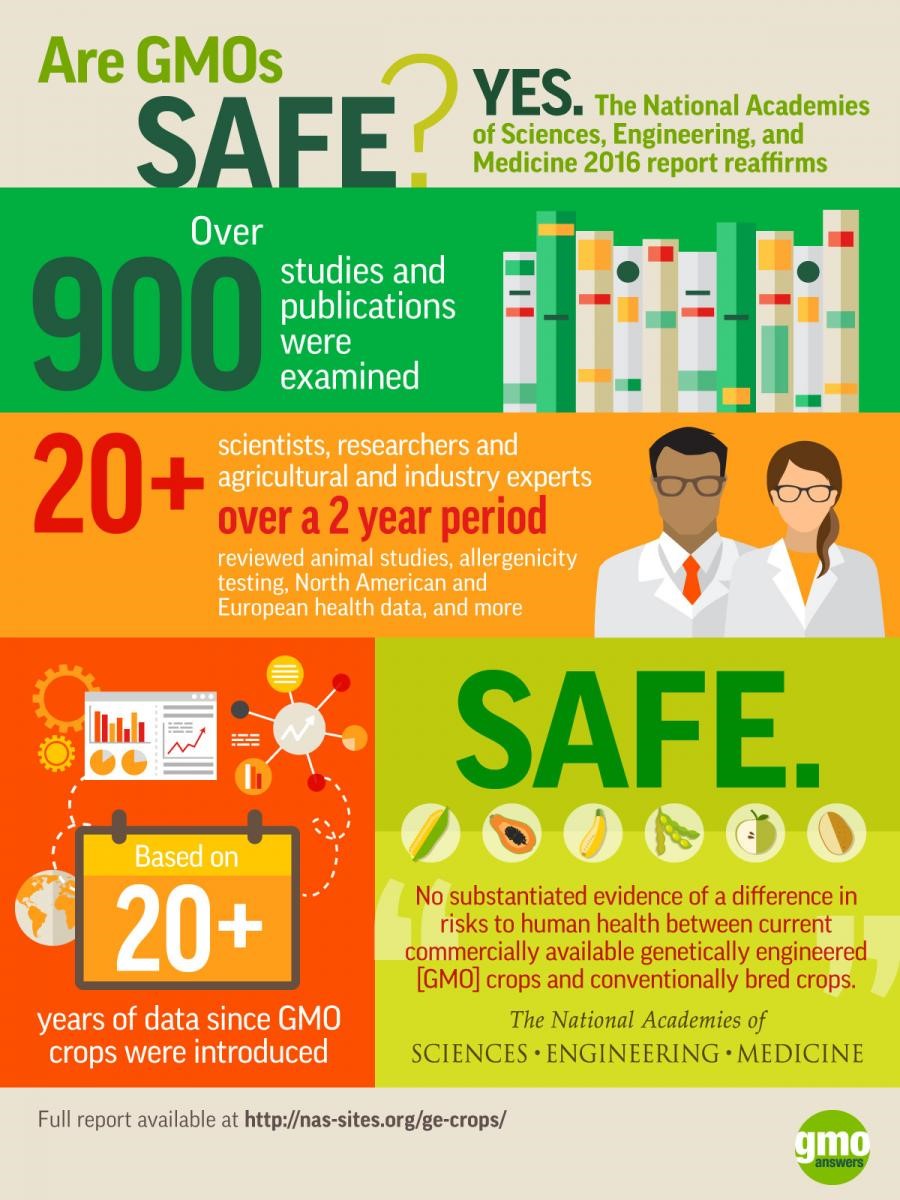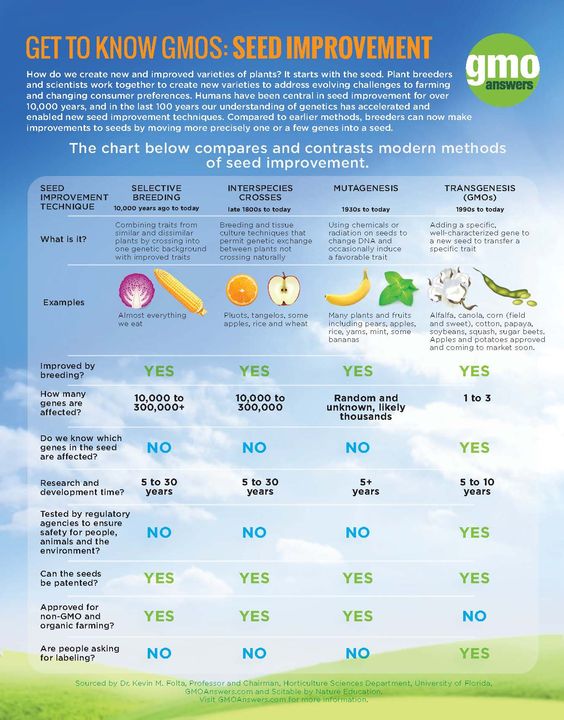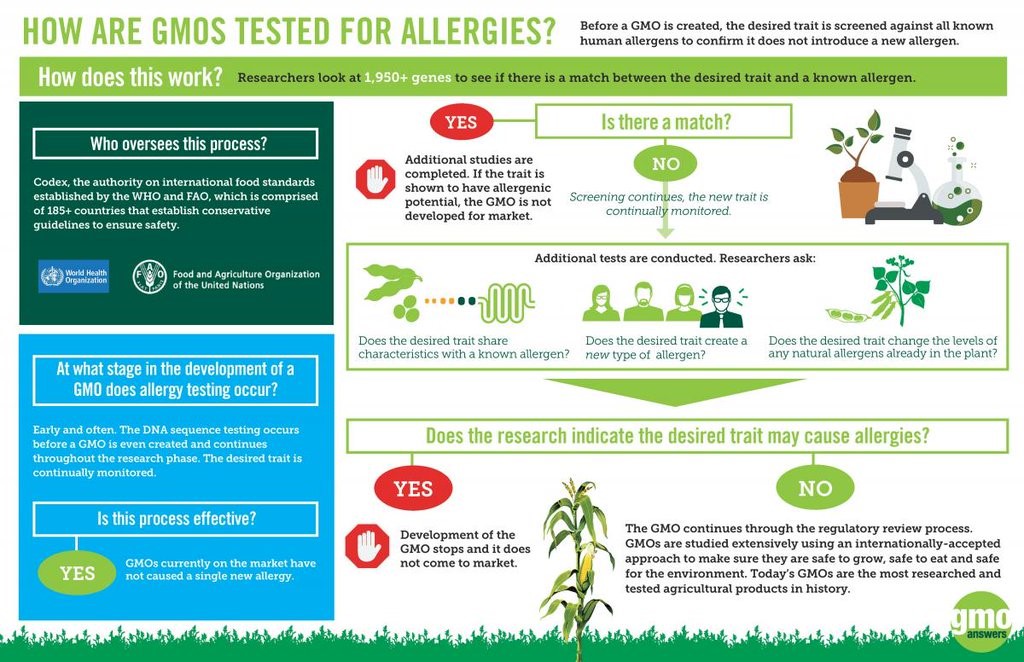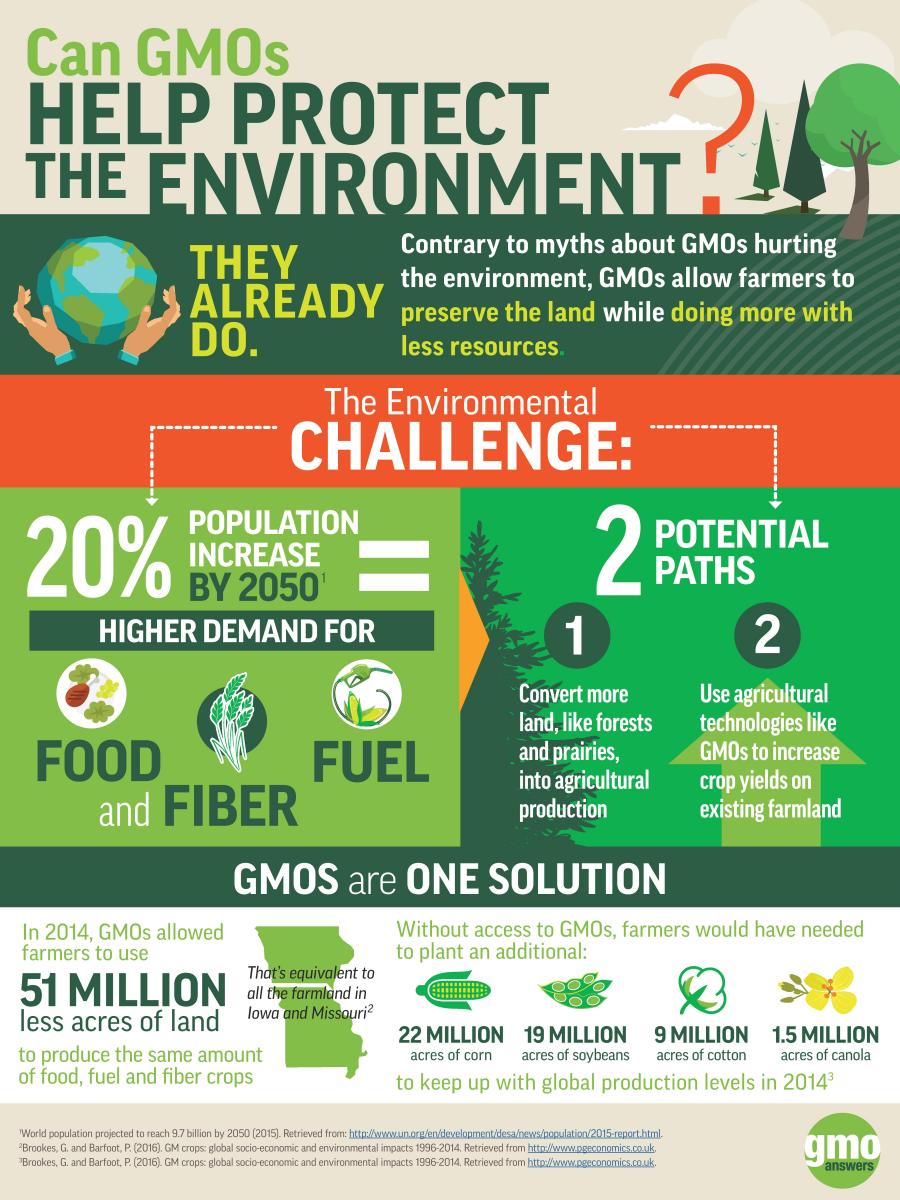Walk into any grocery store and you’ll see lots of different labels plastered across a variety of food packaging. And without additional information accompanying these labels (what does “all natural” actually mean?), they may cause more confusion than clarity, as well as increase the cost of a food product.
We know you have questions about GMOs – from the safety of GMOs, to why farmers and food companies use them, to what foods (or food ingredients) were developed using genetic engineering.
Here we break down 10 things you should know about GMOs so that you can decipher any non-GMO and GMO labels with ease.
1. Yes, GMOs are safe
Thousands of studies have concluded GMOs are safe, including a recent analysis from the National Academies of Sciences, Engineering and Medicine (NAS) that researched this very same question and again concluded: Yes, GMOs are safe

Additionally, the U.S. Drug and Food Administration, American Medical Association, World Health Organization, Academy of Nutrition and Dietetics, The American Medical Association and many other international organizations have also reviewed and confirmed biotech foods are safe.
Genetically modified food products and food ingredients have been evaluated and approved for food and feed import globally. More than 20 years of data in credible scientific studies show no long-term effects from eating GMOs.
2. There are only 10 GMO crops commercially available
Wondering what a GMO is and what it isn’t? There are only 10 GMO crops sold commercially in the U.S.: Alfalfa, Canola, Corn (field and sweet), Cotton, Papaya, Potatoes, Soybeans, Squash, Sugar beets and Apples. Some of these crops, like papaya, are typically consumed whole, while others, like sugar beets, soybeans and field corn, are processed into ingredients found in common food products.
This graphic below lists the characteristics and genetic traits in GMOs.
3. Most foods don’t have a GMO counterpart
You can buy GMO-free water and salt - but here’s the catch: it’s not possible for either to be a GMO in the first place! Even though these products and many others aren’t among the 10 GMO crops that are commercially sold in the US, you may still see a certified GMO-free label - and additional cost - on products like these.
4. Genetic modification in crops is not new
Farmers have been modifying the genetic makeup of crops for thousands of years. See how crop domestication and modification developed over time.
5. Improving a plant doesn’t automatically make it a GMO
Cotton candy grapes, pluots and seedless watermelons are all GMOs right? Nope – they’re developed through a range of seed improvement techniques that aren’t GMO. Learn in this chart four common ways varieties of plants are created.

6. GMOs go through extensive research and testing before coming to market
It requires a tremendous investment of both time and resources to commercialize a new biotech crop. On average, GMOs take 16.5 years and $115 million of research and development before coming to market. The regulatory process alone can take five to seven years.
As one of the GMO Answers experts explained, “While that price tag is significant, so are the losses from pests, diseases and other issues that these new traits are designed to help farmers combat. For example, the U.S. Department of Agriculture has estimated corn rootworm causes $1 billion in damage to the U.S. corn crop alone each year. By delivering traits that can fight these pests, it increases farmers’ productivity.”
7. GMOs don’t cause allergies
According to the National Academies of Sciences, GMOs have not caused a single sniffle, sneeze or bellyache. How are GMOs tested for allergies? Before a GMO is created, the desired trait is screened against all known human allergens to confirm it does not introduce a new allergen. Check out this infographic to learn how researchers look at over 1,950 genes to ensure quality and safety.

8. Why do we need GMOs?
Farmers choose to use GMOs to reduce the impact of agriculture on their environment and reduce their costs — by applying pesticides in more targeted ways, for example. Farmers have also used GMOs to save a crop – such as Hawaiian papaya — that was being threatened by a disease.
9. GMOs help protect our environment
Many misconceptions might fuel the belief that GMO crops aren’t environmentally sustainable, but in reality many of the practices often affiliated with sustainable farming are used with GMO crops.
Fewer pesticide applications, conservation tillage (which reduces greenhouse gas emissions) and water conservation are all practices that can be used with GMO crops.

10. Get to know GMOs … No, really!
*Clarification: Following the video’s production, the genetically modified apple came to market in 2017, making it 10 GMO crops commercially available in the U.S., not nine as stated in the video.
We want to help you understand GMOs and do a better job answering your questions, no matter what they are. We stand 100 percent behind the health and safety of the GMO crops on the market today, and believe it’s important to help people make informed food decisions, which means breaking down what they are, how they are made, what the safety data says.
Join us. Ask tough questions. Be skeptical. Be open. We look forward to sharing answers.